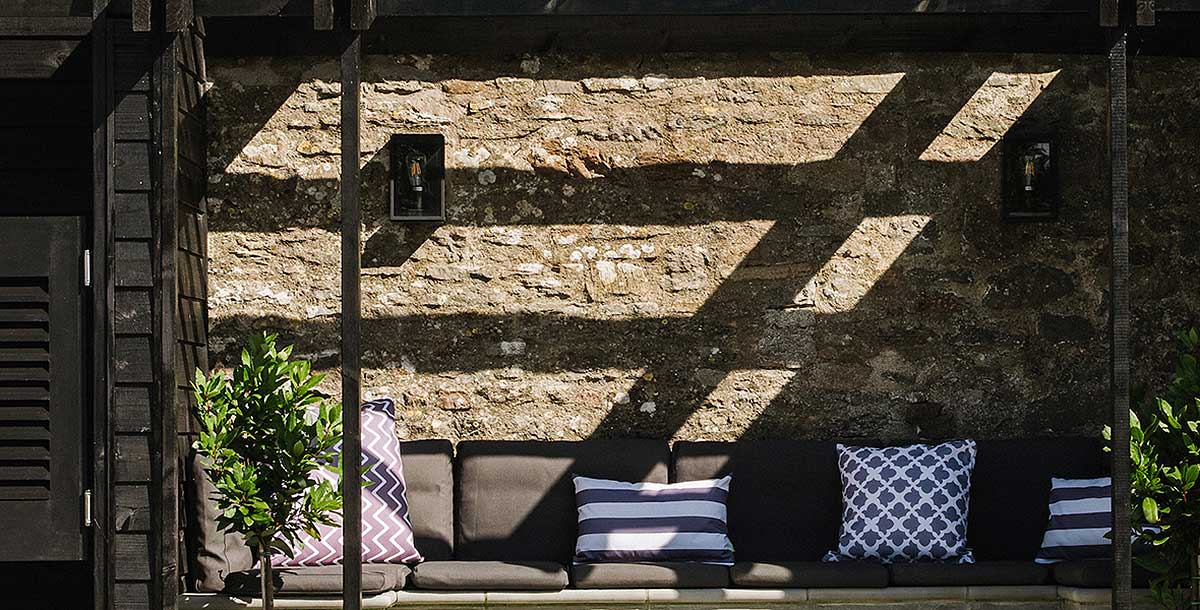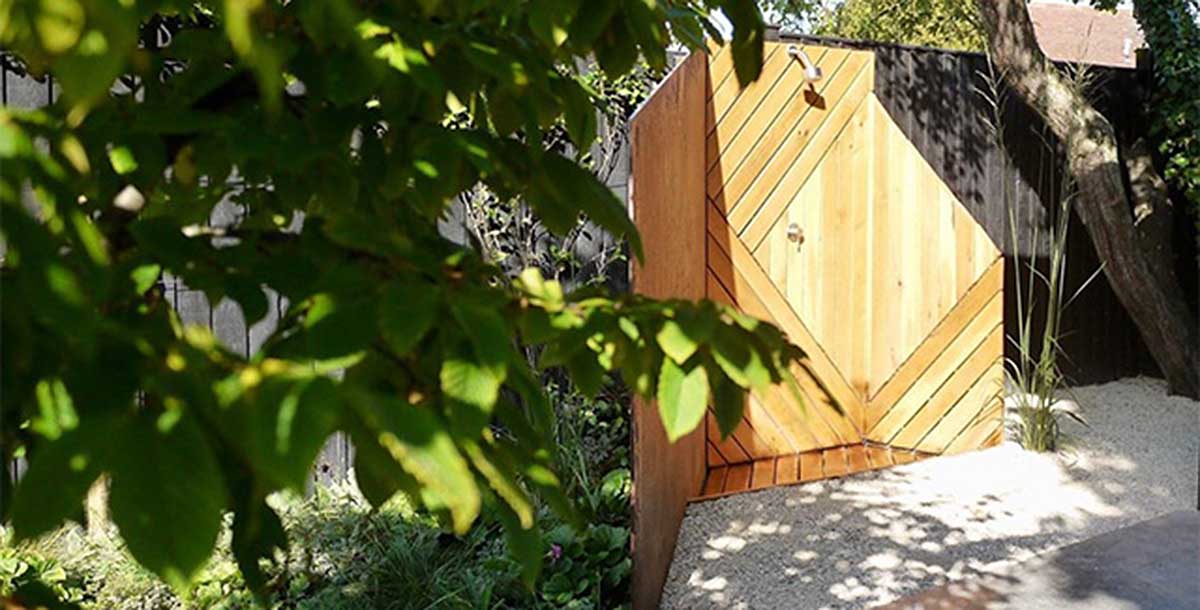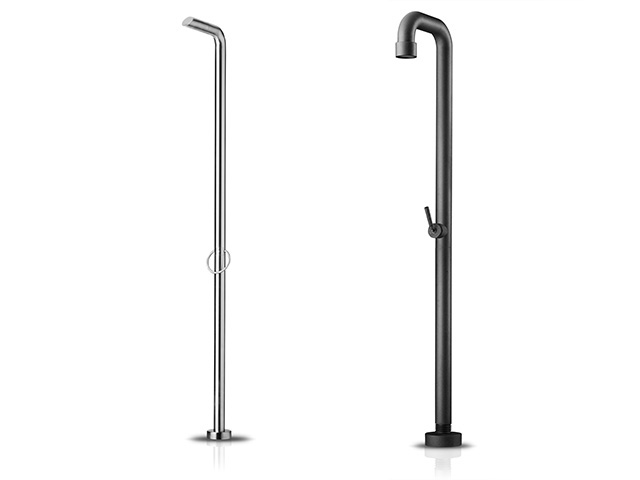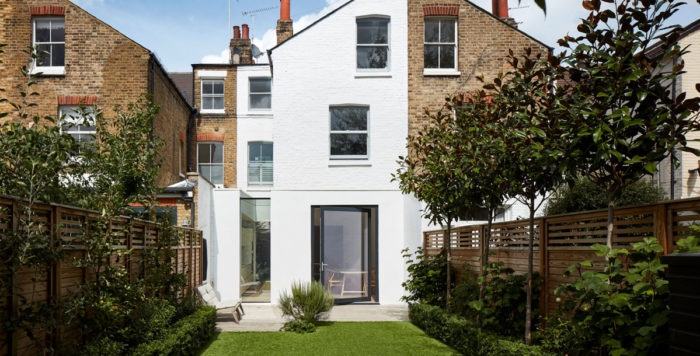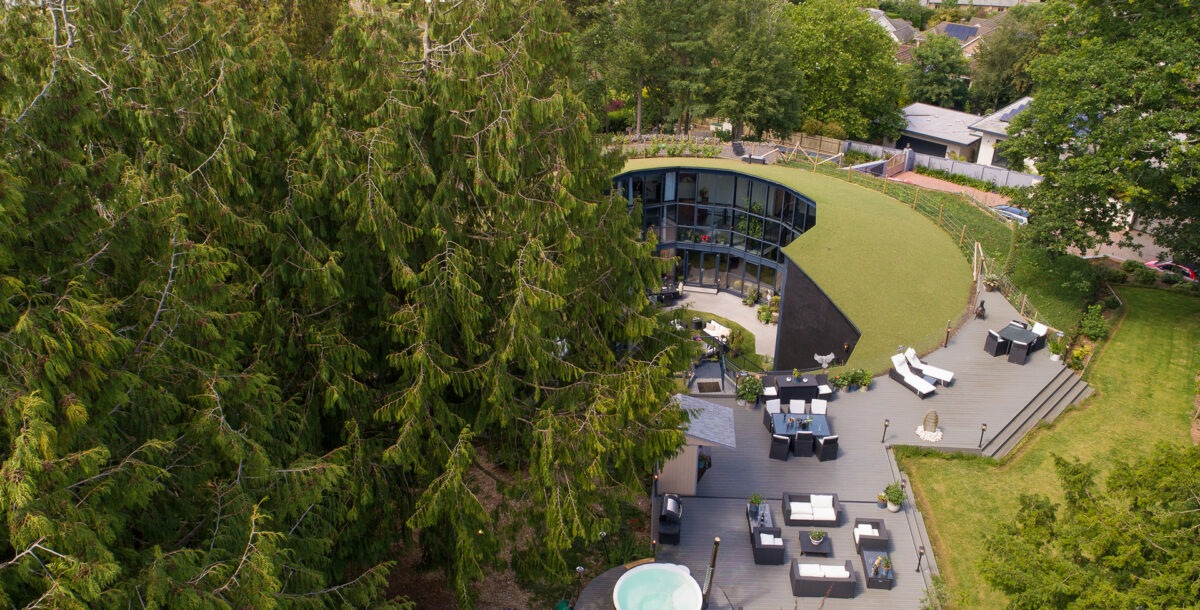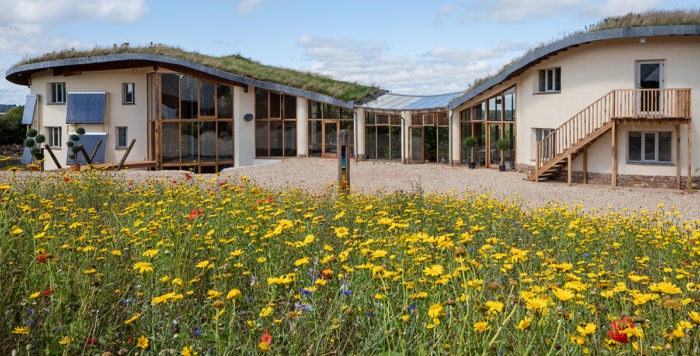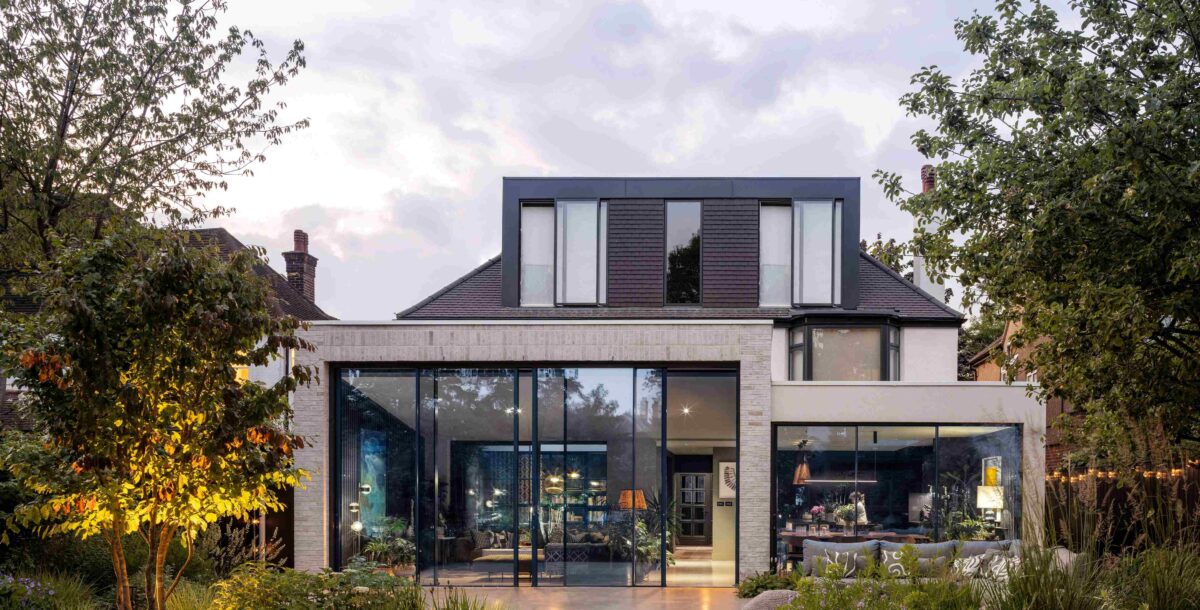What to consider before installing an outdoor shower
Discover what an outdoor shower can offer your garden and the practical considerations before specifying one.
A garden shower isn’t just something that is seen in the ‘I’m a Celebrity’ jungle – you can install one in your own garden.
It can be practical, an extra bathroom of sorts, and a fun way to celebrate the warmer weather. If you have the space and need it is definitely something to consider.
Here, we answer the most common questions on outdoor showers including how to install one, how much they cost and more.

Image: A poolside shower, seating and changing room was created at this residential property in Somerset by architect De Rosee Sa. Photo: Alex James
What is an outdoor shower?
An outdoor shower is what it says on the tin – a shower that is in your garden or outside space.
The plumbing of an outdoor shower includes a showerhead, water pipes and valves. The water source could be as simple as using your garden hose, or it could be linked to your main house water supply.
An outdoor shower can be enclosed or not, and could include a floor, shelves, bench and other amenities.
How do you build an outdoor shower?
Before starting your outdoor shower project, you’ll need to make sure you have planning permission. This shouldn’t be an issue, but it’s best to check on the government website to make sure before making purchases.
Typically, any new plumbing installation often require permission, so if you are running water lines from inside the home for your outdoor shower, permission may be required. However, if you’re using a garden hose you won’t need permission.
Before starting, it’s also a good idea to find out if the outdoor shower is allowed to drain into a gravel bed, or if the shower must be connected to the home’s waste system.
You’ll also need to consider where the shower will be located, and whether it will be just running cold water as a rinsing station, or have both hot and cold.
Privacy and plumbing considerations
Once the preliminary decisions have been made, it’s time to think about the privacy of your outdoor shower. You’ll need to think about how deep it needs to dig down and pouring the drainage gravel (if using) into the holes for the post and making the concrete for each hole.
If your shower is freestanding, the showerhead and shower valve assembly will need a post for support. This post should be in the centre of two support posts where you want the showerhead to be mounted. Keep in mind that after pouring the concrete, it will take 24-48 hours to set.
Once the posts have set, it’s time to think of the plumbing. For this part it can be best to find a professional to work with as it can get quite complicated. You’ll also need to create a drainage area and build a wood floor, if desired.
You can also then use the posts created early to make privacy walls around the outdoor shower. Again, for this element of the project it might be best to get expert assistance.
Where to buy an outdoor shower
You can buy outdoor showers in lots of bathroom retailers includign B&Q, Victorian Plumbing and Robert Dyas to name a few. Niche designs are also available on Etsy and other sites, but they are simple to get hold of.
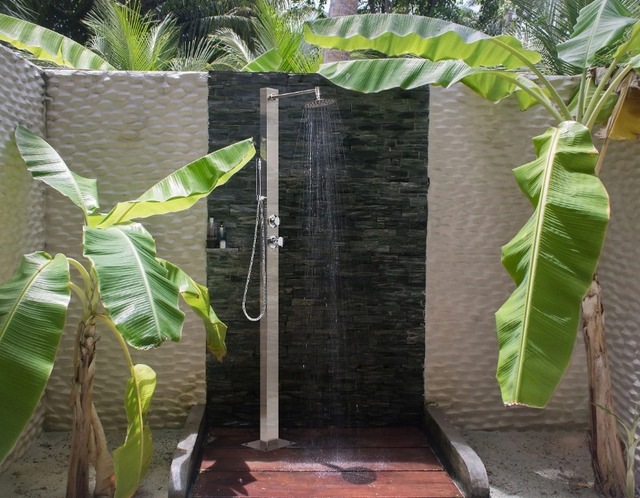
Photo: B&Q
- Freestanding outdoor shower, £359.99 from B&Q – buy here
Can an outdoor shower drain into the ground?
Yes you can drain a shower into the ground. The most common way to do this is by installing a French drain, which is a shallow trench filled with gravel and perforated pipe.
How to winterize an outdoor shower
Just like the rest of your garden, an outdoor shower will need to be protected come winter. This is because you are unlikely to be using it once the frost hits, and if you leave it unprotected it could prove an expensive mistake.
First of all, to winterize the outdoor shower you will need to turn off the water supply to it, as well as disconnecting the fixtures and draining the water.
You also need to insulate any exposed pipes and use an antifreeze solution to stop the pipes freezing in the cold weather.
Next you’ll need to clean and dry the showerhead, and store the components in a dry place for the cold weather. Inspect and make any reparations beforehand, and then cover and protect the rest of the outdoor shower, so it’s ready for use come late spring.
Considerations for an outdoor shower
While installing an outdoor garden shower isn’t going to be a necessity for many homeowners, there are plenty of reasons to consider one as an addition to your garden scheme, even for those who live in less than tropical climes for the majority of the year.
The Grand Designs magazine teamed asked Yousef Mansuri, Head of Design at C.P. Hart, for his key considerations for such a project.

Image: This outdoor shower features a sunken tray to collect water, lined with Nero Riven Slate tiles from Mandarin Stone
Why install an outdoor shower?
Installing an outdoor garden shower is the perfect option for those who live by the sea, have a pool or hot tub, or need some respite from the warmth in summer. It can also be the perfect solution in a colder climate when wanting to have a view whilst showering or as a place perhaps to wash the dog after a muddy walk or children after an equally muddy football match.
As they are relatively small they are compact and make a great solution for a garden which may be too small for a refreshing dip in the swimming pool.
READ MORE

